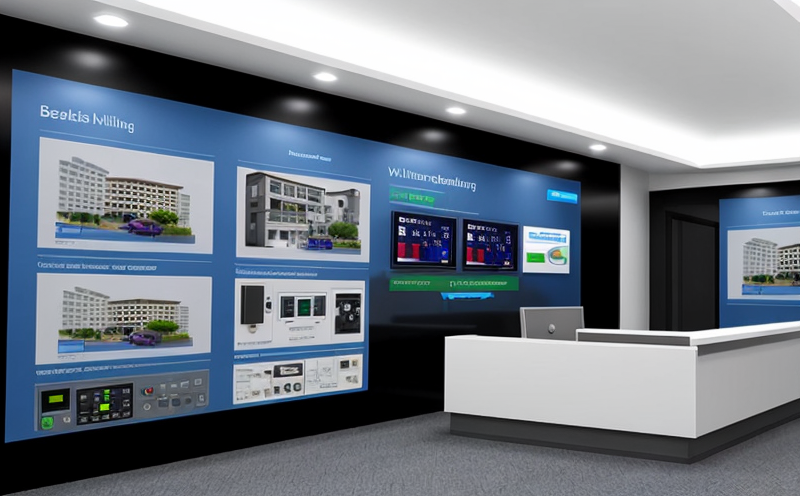ISO 16484-7 Control System Documentation Verification
The ISO 16484-7 standard is a crucial document in the realm of building and infrastructure testing, specifically addressing control system documentation verification for smart buildings. This service ensures that all aspects of the building's automated systems are accurately documented according to international standards. Compliance with this standard can enhance safety, energy efficiency, and sustainability within the building.
Control systems in modern buildings encompass a wide range of technologies designed to optimize various functionalities such as lighting, HVAC (Heating, Ventilation, Air Conditioning), fire safety, and access control. The documentation provided for these systems must be comprehensive enough to cover all operational parameters and ensure that the building complies with relevant regulations.
Our service focuses on verifying compliance with ISO 16484-7, which includes checking the accuracy of design documents, commissioning reports, operation manuals, and maintenance protocols. This process involves a detailed review to ensure all documentation aligns with best practices outlined in the standard. By doing so, we help our clients achieve higher levels of trustworthiness and reliability in their smart building projects.
The importance of this service cannot be overstated for several reasons. First, it ensures that buildings meet stringent safety requirements while also promoting energy efficiency through precise control system documentation. Second, compliance with such standards can significantly improve the overall performance and longevity of these systems. Lastly, having accurate and well-documented controls enhances the building's ability to adapt to changing environmental conditions or technological advancements.
Our approach begins by thoroughly reviewing existing documents against specified criteria from ISO 16484-7. This review includes assessing whether all necessary information is present, verifying calculations, checking for consistency across different parts of the documentation, and ensuring that it aligns with current best practices in building automation.
We then proceed to conduct site visits where we observe actual system operations under various conditions. These observations allow us to cross-verify what is documented against real-world performance, identifying any discrepancies or areas requiring improvement. Additionally, our experts perform detailed audits of maintenance records and procedures to ensure they follow prescribed guidelines outlined in ISO 16484-7.
The final step involves preparing a comprehensive report summarizing findings along with recommendations for corrective actions if necessary. This document serves as both an audit trail and valuable guidance for future improvements or updates to the control system documentation.
Our experienced team of engineers uses advanced software tools and methodologies to facilitate this process, ensuring thoroughness and accuracy throughout each phase. We employ state-of-the-art equipment tailored specifically towards evaluating complex building automation systems.
Why It Matters
The significance of ISO 16484-7 control system documentation verification lies in its role as a critical component of smart buildings. Properly documented control systems are essential for maintaining optimal performance, ensuring safety standards are met, and promoting energy efficiency.
From an operational perspective, accurate documentation ensures that all aspects of the building's automated functions are correctly specified and implemented. This not only enhances day-to-day functionality but also simplifies troubleshooting processes when issues arise. For instance, detailed records can help quickly identify the root cause of a malfunctioning system without extensive downtime.
Compliance with ISO 16484-7 is particularly important for regulatory reasons. Many jurisdictions around the world enforce strict regulations governing the design and installation of building automation systems. By adhering to these standards, organizations demonstrate their commitment to meeting legal requirements, thereby protecting themselves from potential fines or penalties.
Moreover, comprehensive documentation supports continuous improvement initiatives within a facility. As technology evolves, having up-to-date and well-organized records enables buildings to incorporate new features seamlessly while maintaining compatibility with existing infrastructure. This adaptability is crucial in today's rapidly changing technological landscape.
The benefits extend beyond mere compliance; they contribute positively towards sustainability goals by optimizing resource usage through intelligent control strategies. For example, precise temperature settings based on occupancy patterns can lead to reduced heating and cooling costs while minimizing environmental impact. Such practices align perfectly with broader corporate social responsibility objectives.
Scope and Methodology
| Aspect | Description |
|---|---|
| Review of Existing Documentation | We begin by examining all available documentation related to the control systems, including design plans, installation manuals, operating procedures, and maintenance schedules. Our goal is to ensure completeness and accuracy. |
| On-Site System Testing | During this phase, we test each controlled function within the building under typical operational scenarios. This helps validate what’s documented against actual performance. |
| Maintenance Record Audit | A detailed examination of all maintenance activities performed on the control systems over time. This includes checking for adherence to prescribed intervals and procedures outlined in ISO 16484-7. |
| Data Analysis & Reporting | After completing all evaluations, we compile a thorough report highlighting our findings along with recommendations for any necessary corrections or enhancements. This document becomes an invaluable resource for future reference and improvement efforts. |
Benefits
The advantages of ISO 16484-7 control system documentation verification are numerous. Firstly, it ensures that all aspects of a building’s automated systems are accurately documented according to international standards, enhancing both safety and operational efficiency.
Secondly, compliance with these standards can significantly improve the overall performance and longevity of the systems involved. Proper documentation helps identify potential weaknesses early on so they may be addressed before becoming critical failures. Additionally, it fosters a culture of continuous improvement by providing clear guidelines for future upgrades or modifications.
Thirdly, having accurate and well-organized control system documentation supports sustainability goals through intelligent resource management strategies. For example, optimized temperature settings based on occupancy patterns can lead to reduced heating and cooling expenses while lowering environmental impacts. Such practices align perfectly with broader corporate social responsibility initiatives.
Forth, meeting these standards demonstrates a company’s commitment to regulatory compliance, thus safeguarding against possible legal challenges or sanctions. It also builds trust among stakeholders by showcasing transparency regarding how the building operates and maintains its systems.





